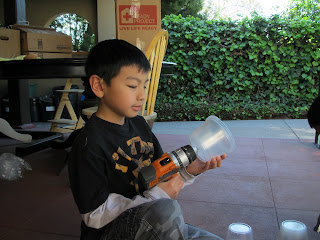It features about 30 photos of children crying in various situations. The "reason" for the child's distress is chronicled in each photo.
The meme is meant to illicit laughter as well as empathy. The message seems to be, "Yes, my child cries at what I perceive to be silly, ridiculous and sometimes outlandish reasons. Let's all laugh at them and nod in mutual understanding of how silly, ridiculous and outlandish our precious children can be."
At first I wanted to forward the meme on my Facebook with a quip like, "We may laugh, but let us not forget that when our children cry like this, their distress is REAL and the challenge to overcome this distress and return to a state of homeostasis is integral to their healthy development that we as parents must be mindful to offer the appropriate understanding."
I did it, and deleted it almost immediately. The quip was just too inadequate to convey such an important message. Most people will be entertained by this meme and not even think twice about the lost opportunity to improve our relationship with our children and get a better perspective on "tantrums."
The distress of the children in these photos are REAL. Their tiny bodies are being flooded with stress hormones in exactly the same way our own adult bodies are flooded when we experience distress at our age. So, what does real empathy for these children look like?
How about this:
This child's physical and emotional being is experiencing the same FRUSTRATION as this man, could not keep his marriage together and is trying to see his children and deal with the fresh wounds of divorce.
Or this...
This child's distress is doing to his mind and body what this man's is doing to him. He can't find his children after the storm and flood swept through his village. It's not funny or fair to DELIBERATELY put a child in this position and then photograph him at his most vulnerable state.
What would we think if a super-wealthy individual were to post something like, "... No insurance? Well say good bye to that 3 bedroom you just remodeled, because you can't pay for your cancer treatment!" We would consider that person a sociopath, a selfish d!c%head. Yet, with this meme, the parents get a pass, and even a pat on the back for the very same action.
Why are our children not afforded the same respect? Perhaps we really don't realize the LEGITIMACY of their feelings. Children need an appropriate amount of time and safe space to express their feelings. They need the people they love and depend on to acknowledge that their feelings matter. They need mom and dad, and grandpa and auntie to be understanding that they need a little more time to process distress, and to be that safe set of arms to hide in when the world gets occasionally scary and overwhelming.
I have a 5-year old that will occasionally scream in frustration at not being able to see the new LEGO movie right now! The conventional parental response has been to try and force the little one to just stop crying, stop stomping and "be patient!" Easy for us grown ups, and easy to forget how difficult it is for a 5-year old. I've learned to acknowledge my little guy by saying, "I know you want to see that movie. It's not in theaters yet, and I SEE you are frustrated. Waiting is hard. I KNOW." It's true. Waiting IS hard. I too have a hard time with it sometimes.
We can hold each other while counting the days (or the "sleeps") on the calendar until we can go see the movie. I can sit with him and truly revel on the greatness of LEGO and how funny and exciting the trailer is. We can sit and work through our distress over having to wait. We do it together, with me offering my strength and love as the solid emotional base from which my son can safely express his feelings, with the knowledge that I truly value and respect him.
When we dismiss our children's distress because we perceive the cause to be insignificant, inconsequential or downright silly, we lose an important and critical chance to be an example of empathy and compassion, or of patience and understanding. The parents who made light of their children's distress in these photos did not consider, did not know or somehow forgot that fear, frustration, anger, and sadness are real for the minds and bodies of their little ones. It is ironic how parents love their children so much and yet still capable of such dismissive behavior.
This is loss...
I relate with this picture because I remember vividly my first day of school and my own mother's words, "You are on your own now. Don't cry!"
This too is loss and it feels the SAME.
Is it unfair to compare the two photos? If the stress hormone surging through our bodies is the same when it comes to loss? How can we NOT compare them?
Thank you to the following for my enlightenment when it comes to my children, their education and their emotional well being:
Laurie A. Couture, Author of "Instead of Medicating and Punishing"
http://www.laurieacouture.com/the-book/
Dr. Shefali Tsabary, Author of "Conscious Parenting"
https://drshefali.com/
Dr. Gordon Neufeld and Dr. Gabor Mate, Authors of "Hold On To Your Kids."
http://www.amazon.com/Hold-On-Your-Kids-Parents/dp/0375760288




















